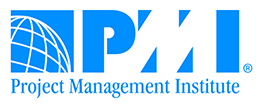Lessons Learned In Establishing a Proect Management Office (PMO)
I recently did a consulting assignment wherein I helped a well-known insurance company create a Project Management Office (PMO). I will likely have some more thoughts/posts on this down the road but I thought I’d share some lessons learned while they were fresh in my mind:
Make sure you have a sponsor – A senior executive in the organization has got to sponsor this and be willing to stay with it. You need commitment for the long haul. Organizational change – which is effectively what this is – takes time and you need an evangelist and supporter. (You yourself might be that person or it could be a department manager or PM Director that drives this effort.)
Stakeholders – The standard joke in real estate is location, location, location. In project management it’s stakeholder, stakeholder, stakeholder. Make sure your stakeholders (the PM’s using it and the customers they’re serving) have input into this and understand what it does and, just as importantly, does not do.
Decide on a Structure – I’ll here use the three PMI types: Supportive, Controlling and Directive. Suffice it to say that the PMO can be anything from a repository to an organization that actually runs projects. The business unit within which I was working was somewhat unique in that it was actually a group of PM consultants who serviced the various business units. So the type of structure it was depended on what the business units wanted from it.
Charter – You should write up or get written a PMO charter. You want management to sign off on what they’re getting so there’s no controversy later. Well, there may still be controversy but at least you’ve got it in writing.
Create a schedule – Bringing up a PMO is a project, much like any other. So treat it as such. You’ll need a schedule that’s resourced and that accounts for company holidays, vacations, etc.
Leave enough time to do this – You need to time to plan, which means meetings, which means other team members’ availability. Try to get at least ½ hour meetings. But if someone says I can only give you 15 minutes, take it. Or if they say I’ll talk to you while I’m walking to the cafeteria, take it. In fifteen minutes, one of the Directors laid out 10 bullets that helped me flesh out the schedule. The perfect is the enemy of the good.
You need to drive it. People will tell you they want to do this, but when you try to meet with them they will always be too busy. You have to be persistent and keep trying to get them in a meeting room. Have a specific agenda so as not to waste their time. As above, take progress in small chunks if you have to. Once they’re in the meeting room, they’ll focus on what they need to. But most times they’re trying to do their regular job and will see this as a distraction. You cannot let that stop you.
Don’t boil the ocean. Meaning don’t try to do everything all at once. Don’t over-promise. You and your core team will get called away time and time again to other things. So keep the schedule of deliverables to a reasonable level. It may take you twice as long to do this project as you thought because you’re stealing cycles from other work. But don’t get discouraged. A year from now will still be a year from now. Might as well have something to show for it.
Change management – Recognize that you are introducing change into the organization and while everybody recognizes they need to do things differently, paradoxically they hate change. So read up on the topic. PMI has some good articles.
Low-hanging fruit. Go for some early wins. So perhaps establish a couple of standardized artifacts and put them up on SharePoint, train the team how to use them, codify PM-to-PM transition plans. You want to make measureable progress.
Metrics. Like it or not, you will need to prove the usefulness and validity of the PMO. Often they’re the first endeavors to get cut. Find some way to measure where you are now (X percent of projects late and/or over-budget) and measure again down the road. Management loves numbers. And simplicity. Don’t bury them in PM jargon. They could not possibly care less about your Gantt chart.
Project managers are expected to be more strategic these days as exemplified by PMI’s requiring their certificants to have some strategic and leadership training going forward. If you don’t have a PMO – or at least some kind of process in place – all you then have is chaos. Which is interesting for a while. Until it isn’t.


Key concise article Jim, thanks for sharing, I particularly liked your quote “The perfect is the enemy of the good”. It echos a lot of what I heard at the PMO Symposium, keep it simple!
Yes. Just out of curiosity, is this the Symposium that PMI hosts? Or some other?
Yes the PMI one, I wrote about my experiences there, it’s here if you’re interested: http://pmoflashmob.org/top-ten-messages-from-pmo-symposium-2015/